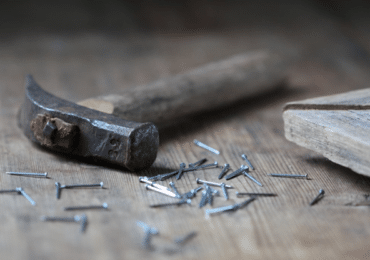Equipping oneself with the right set of tools, insightful strategies, and a well-laid plan can turn the daunting task of home improvement into an enjoyable and fulfilling endeavor. The journey of transforming a living space, of making your comfort zone truly your own, is an art and science that demands more than just a random collection of DIY ideas. It requires a harmonious blend of creativity, pragmatic decision-making, financial foresight, and meticulous planning. This comprehensive guide will be your companion throughout your home improvement journey. It will illuminate every stage, from the initial idea to the final touches, unraveling complexities, and making the process more accessible and less daunting. So, let us begin!
Identifying Your Home Improvement Goals
Before we delve into the specifics of home improvement, the first and crucial step involves identifying your goals. What is it that you wish to achieve – a simple refresh of a tired, old space, or a complete overhaul? Are you looking to increase your property’s value or enhance its aesthetic appeal? Are you making changes for yourself or to attract potential buyers? Reflecting on these questions will help determine the direction your home improvement project takes. Remember, clear and realistic goals are the foundation of any successful home improvement endeavor.
A lot of people opt for a home improvement project without being aware of its scope or the efforts involved. To avoid wasting money, time, and energy, it is essential to be prepared and have an in-depth understanding of your goals. It will also ensure that you remain aligned with them throughout the process.
Calculating the Budget For Your Home Improvement Project

Once your goals are determined, the next step is to set a budget. After all, running out of funds when you’re halfway through a project can be rather stressful. To keep yourself on track and in control of finances, it is essential to plan wisely and have a clear understanding of how much money you need and what it will be spent on.
To calculate the budget, you need to consider the materials, tools, and labor costs. Depending on your preference and expertise, you may hire professionals or do some of the work yourself. If you’re doing it yourself, make sure that the right supplies are purchased to ensure quality results.
Once these costs are determined, add 10-15% of contingencies for any unforeseen expenses. This will come in handy if things don’t work out as planned or any additional tasks arise during the project.
Consider Renting Dumpsters
The task of disposing of all the waste created during a home improvement project can be daunting. Not only is it an unpleasant process, but it’s also time-consuming and potentially expensive if you’re relying on regular trash collection services. Consider renting a dumpster to make the job easier and more efficient. You’ll also reduce your carbon footprint by not having to transport large amounts of debris to and from the disposal site. An expert from Bin There Dump That suggests that delivering clean, residential-friendly dumpsters to your property for the duration of the project will help you save time and money. Dumpster rental companies typically offer various sizes of containers, depending on the size of your project. They’ll also haul away all the debris for you and recycle as much as possible, making waste management a cinch!
Creating a Detailed Action Plan
Now that your goals and budget are accounted for, you must create an action plan to keep track of the project’s progress. A detailed timeline should be created listing all the stages of the home improvement process and the tasks associated with each one. This timeline should include the start date, expected completion date, and any milestones that you wish to achieve along the way.
Creating an action plan is a crucial part of any project as it helps in managing time and resources more efficiently. The way you structure your plan will be indicative of how successful the project is going to be. To have a thorough understanding of how the project will progress, consider breaking it down into smaller tasks. This makes it easier to track progress and avoid distractions while working on the project.
Executing Your Home Improvement Project

Once the goals, budget, and action plan are in place, it’s time to start executing the project. Depending on what your project entails, this stage may involve any or all of the following:
- Selecting materials such as paint, flooring, tiles, and more.
- Purchasing tools and supplies for the project
- Hiring contractors or tradespeople to help with certain tasks.
- Painting walls and ceilings according to your design plan.
- Installing new fixtures such as lighting, doors, windows, etc.
- Laying down new floors and carpets in accordance with the design plan.
This is the stage when your project will start to come together and take form. It is essential to pay close attention to details, follow the action plan, and communicate any changes or adjustments that you wish to make along the way. This will ensure that all parts of the project are completed successfully, on time, and within budget.
Evaluating the Success of Your Home Improvement Project
After the completion of your home improvement project, it’s time to evaluate its success. Were your initial goals met? Did the project stay within your budget? Was it completed within the expected timeframe? Did the completed project fulfill its purpose, whether it was to increase the property’s value or enhance your living experience? Evaluating the success of your project will not only provide a sense of satisfaction but also serve as a learning experience for future projects. Review each aspect of the project, noting what went well and what could have been done better. This process of reflection will heighten your understanding and mastery of home improvement, preparing you for more ambitious projects in the future. Therefore, make sure to take the time to evaluate your project and document any lessons that you’ve learned.
In conclusion, executing a home improvement project is a multi-faceted process that requires thoughtful planning and careful execution. From outlining clear goals to calculating a realistic budget, renting appropriate waste disposal, creating a detailed action plan, and evaluating the project’s success, each step plays a crucial role in determining the outcome of your endeavor. The journey may seem daunting, but with thorough preparation and a well-structured plan, the results can be rewarding. Not only will you enhance the aesthetic appeal or value of your property, but you’ll also gain invaluable skills and experiences along the way. Here’s to your next successful home improvement project!

